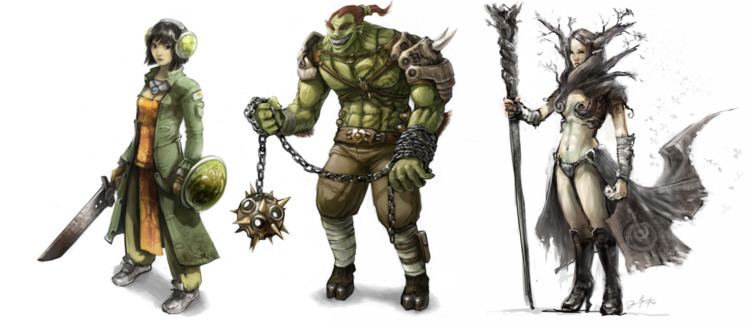 | ||
High fantasy is a subgenre of fantasy, defined either by its setting in a fictional universe or by the epic stature of its characters, themes, and plot. The term "high fantasy" was coined by Lloyd Alexander in a 1971 essay, "High Fantasy and Heroic Romance" (originally given at the New England Round Table of Children's Librarians in October 1969).
Contents
Genre overview
High fantasy is defined as fantasy set in an alternative, fictional ("secondary") world, rather than "the real", or "primary" world. The secondary world is usually internally consistent, but its rules differ from those of the primary world. By contrast, low fantasy is characterized by being set in the primary, or "real" world, or a rational and familiar fictional world, with the inclusion of magical elements.
The romances of William Morris, such as The Well at the World's End, set in an imaginary medieval world, are sometimes regarded as the first examples of high fantasy. The works of J. R. R. Tolkien—especially The Lord of the Rings—are regarded as archetypal works of high fantasy. Stephen R. Donaldson's The Chronicles of Thomas Covenant is another example of a high fantasy series.
Characters
Many high fantasy stories are told from the viewpoint of one main hero. Often, much of the plot revolves around his or her heritage or mysterious nature. In many novels the hero is an orphan or unusual sibling, often with an extraordinary talent for magic or combat. He or she begins the story young, if not as an actual child. In other works the hero is a completely developed individual with a unique character and spirit. High fantasy is not limited to a male protagonist.
The hero often begins as a childlike figure, but matures rapidly, experiencing a huge gain in fighting/problem-solving abilities along the way. The plot of the story often depicts the hero's fight against the evil forces as a Bildungsroman.
In many books there is a knowing, mystical mentor/teacher. This character is often a formidable wizard or warrior, who provides the main character with advice and help.
In some books, there is also a mysterious Dark Lord, often obsessed with taking over the world and killing the main hero. This character is an evil wizard or sorcerer, or sometimes a kind of god or demon. This character commands a huge army and a group of highly feared servants. In some works the villain may have had a predecessor/s who might have been superior or inferior to them.
The progress of the story leads to the character learning the nature of the unknown forces against him, that they constitute a force with great power and malevolence.
Good versus evil
The good versus evil fighting against each other is a common concept in high fantasy, and the character of evil is often an important concept in a work of high fantasy, as in The Lord of the Rings. Indeed, the importance of the concepts of good and evil can be regarded as the distinguishing mark between high fantasy and sword and sorcery. In many works of high fantasy, this conflict marks a deep concern with moral issues; in other works, the conflict is a power struggle, with, for instance, wizards behaving irresponsibly whether they are "good" or "evil".
Saga or series
Role-playing campaign settings like Greyhawk by Gary Gygax, Dragonlance by Tracy Hickman and Margaret Weis and Forgotten Realms by Ed Greenwood are a common basis for many fantasy books and many other authors continue to contribute to the settings.
In video games
Many early video game developers played Dungeons and Dragons in their free time, and were influenced greatly by its rules when creating mechanics and structures. Some developers were influenced by its pre-made worlds instead, the most popular of which were high fantasy settings. As a result, many popular series of games such as Warcraft and The Elder Scrolls are high fantasy, which has allowed the genre to further proliferate.
